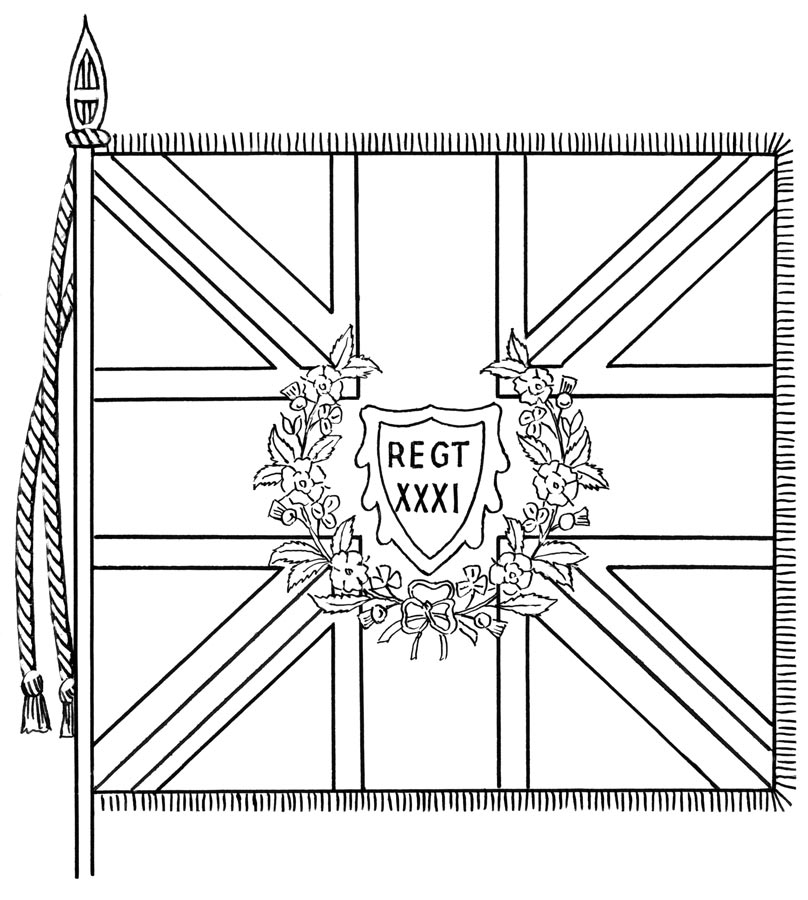The Colours of The East Surrey Regiment
(and its forebears the 31st and 70th of Foot)
Thirty-First Regiment (1st Battalion), 1788-1802
 |
| Figure 38 (Click to enlarge) |
These colours, the earliest of the 31st known to be in existence, were discovered in 1951 at the bottom of a box containing Sikh standards captured in the Sutlej campaign of 1845-46. Very dilapidated, they were beautifully repaired by the Royal School of Needlework, and are now on view at Clandon Park. It is almost certain, from an examination of Inspection Returns, that they were received by the 31st on its return from eleven years service in North America. They were carried in the French Revolutionary War during service in the Low Countries, and in the West Indies, and were probably retired in 1802 after the campaign in Egypt. The Regiment had been out of the country when the Union of Great Britain and Ireland took place in 1801 when, amongst other alterations, a shamrock was ordered to be inserted in the central wreath – now known as the union wreath – along with the roses of England, and thistles of Scotland. The Regimental Colour is of special interest too as it is the earliest example of the traditional facing colour, buff, of the 31st, following the instructions laid down in the Royal Warrant of 1st July 1757 that Regimental Colours should conform to the facing colour of the regiment; also, on account of its age, it is without the red saltire of St Patrick. What is particularly strange about this stand is that it seems to have been kept by the Regiment for over 150 years without being properly laid up, or even cared for.
These venerable relics would originally have been six foot by six foot six inches in size, although no more than a quarter of each Colour now exists – although fortunately the fragments include the central portions. The original designs show clearly the extremely freehand style allowed the eighteenth century seamstresses.
Related
